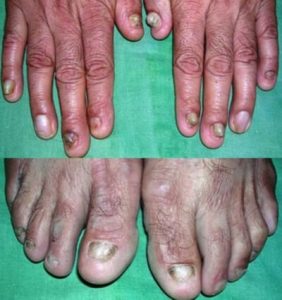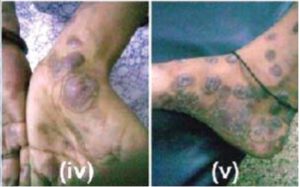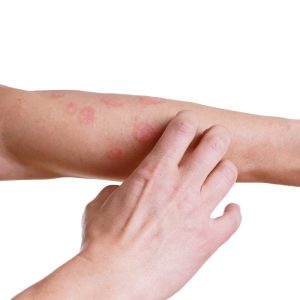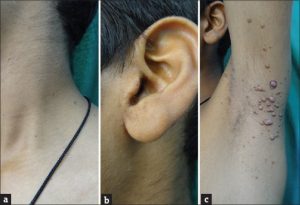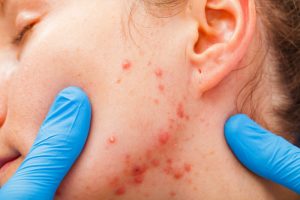Authors:
Vibhu Mendiratta, Bhawna Harjai, Ravindra V Koranne
Department of Dermatology and Sexually transmitted diseases, Lady Hardinge Medical College and Associated Shrimati Sucheta Kriplani and Kalawati Saran Children’s Hospital, New Delhi-110001, India
Citation:
Mendiratta V, Harjai B, Koranne RV. Successful management of acne fulminans with combination of minocycline and dapsone. Indian J Dermatol 2006;51:128-30
Introduction:
We know them as Pimples and experts call it Acne Vulgaris: a common skin problem which appears in the form of pimples popping up on the face, shoulders, neck, back and chest usually during the onset of adolescence.
While pimples and acne, in most cases, are not considered to be serious. Cases of acne going wrong or causing complications have continued to surprise researchers and skin care experts. The case study we are going to take you through is about the successful management of Acne Fulminans, a rare and serious condition caused due to sudden worsening of acne, in a 15-year-old boy.
What is Acne Fulminans?
Acne Fulminans is a serious scarring condition, in which colossal lesions appear on the back and chest of the patient, associated with joint pain and fever. It is more common in teenage boys than in any other gender and age group, though the cause of the disease is still unknown. According to reports, it may be caused due to hypersensitivity, immune related disorders or late hypersensitivity reactions.
Here is a case report in which a 15 year old Indian boy suffering from Acne Fulminans was managed by skin care experts with a combination treatment of dapsone and minocycline.
Case report
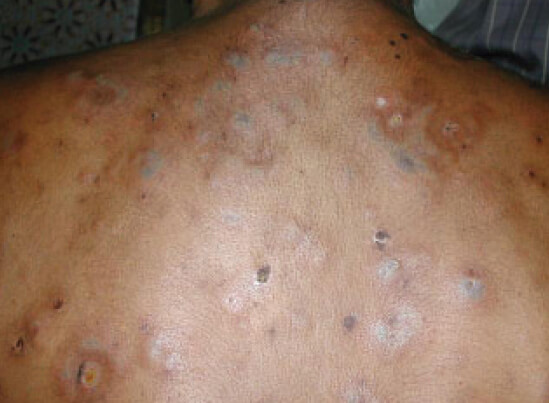
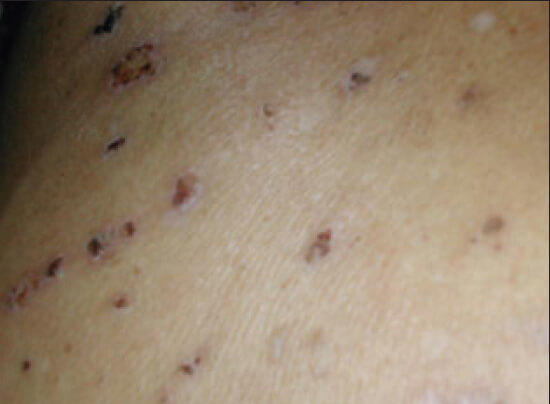
A teenage boy complained of sudden onset of lesions, in addition to a number of swellings on his back. At the same time, he was also suffering from fever, and joint pain in the left knee. He had already been on Tetracycline treatment for acne on face and back, along with a number of topical applications and systemic antibiotics.
Clinical examination and diagnosis
When the boy came to the clinic, he was conscious, but had fever less than 100˚F. No other physical problem was identified upon examination. Upon skin examination, multiple skin colored nodules were found, measuring 1.5 x 2.5 cm in size. Some of them had ulcerations and erosions covered under the crusts. There were several lesions on his entire back, extending from upper portion to the lower back, with some lesions on the face as well. He had pain in his left knee joint flexion, but his systemic examination came out to be normal. The doctors then considered diagnosing Acne Fulminans with differential analysis of gram negative folliculitis. Left knee x-ray was normal, and culture was sterile.
Medical prescription
While waiting for the sensitivity and culture report, he was recommended minocycline 100mg twice in a day, along with dapsone 100mg once in a day. Within a week, 40% lesions showed signs of healing, as they decreased in size, and the pustules started drying up. After 7 days, dapsone was increased to 200mg per day, after which the patient presented 100% improvement within 4 weeks. After that, dosage of dapsone was reduced gradually to 150mg daily for 3 weeks, and then 100mg for 4 weeks.
Recovery
After 3 months, the boy did not develop any new lesions, and was left with only residual scars on his back. The doctors stopped his dapsone dosage, but he was kept on minocycline for 4 more weeks, and he did not show any negative side effects.
Discussion
The exact causes of Acne Fulminans are still not known, but its sudden outbreak, in addition to febrile course, along with a raised white cell count and joint pain may indicate vasculitis or a hypersensitive reaction. An anti-inflammatory agent, such as a systemic steroid, can be used to control clinical symptoms, particularly in severe cases. It has been found that most patients do not show any improvements with antibiotics and Tetracyclines.
Minocycline has been found to be useful in managing acne and other related disorders, but it had never been used for treating Acne Fulminans before. The drug was used for this condition for the first time in this case, and the results were successful. The patient was given 100mg minocycline twice daily, in addition to dapsone 100mg twice daily.
Minocycline is helpful in stopping both cell and humoral mediated immunity. It is easily available, and causes fewer side effects than isotretinoin and corticosteroids. Considering this, it becomes a better option for treating moderate cases of Acne Fulminans.
How minocycline exactly works is not known, but it may be effective because of its actions of modulating the immune system of the patient. In conclusion, minocycline can be used along with dapsone, steroids and other adjuvants to successfully treat Acne Fulminans.
Disclaimer: This case study is meant for understanding purpose. Consumers are advised not to do self medication and meet their dermatologists for any type of skin problem.

